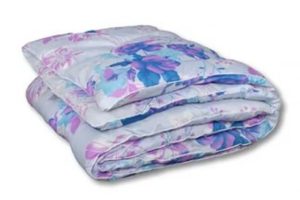Polyester and nylon are the two most popular synthetic material. Despite all their external similarities, they also have significant differences.
Application, advantages and disadvantages of nylon
 The material is light, durable, elastic, does not lose shape under the influence of moisture and many chemicals. Smooth to the touch, shiny, when applied to the surface of another product, can seriously improve its attractiveness.
The material is light, durable, elastic, does not lose shape under the influence of moisture and many chemicals. Smooth to the touch, shiny, when applied to the surface of another product, can seriously improve its attractiveness.
The raw material for the production of the material is adipic acid mixed with hexamethylenediamine and solvent. This mixture is heated, resulting in the formation of plastic, and from it nylon threads are produced.
There are types of nylon used in manufacturing. ABOUT They are usually included as a component in more complex materials, or are supplemented with graphite or fiberglass. It is better known to the common consumer as a material suitable for sewing sportswear, roomy bags and stockings.
They are usually included as a component in more complex materials, or are supplemented with graphite or fiberglass. It is better known to the common consumer as a material suitable for sewing sportswear, roomy bags and stockings.
The material is light, durable, elastic, does not lose shape under the influence of moisture and many chemicals. Smooth to the touch, shiny, when applied to the surface of another product, can seriously improve its attractiveness.
There are also disadvantages:
- is quite electrified;
- poorly permeable to air;
- wearing nylon items for a long time causes discomfort;
- allergic
Many experts agree that polyester the most common synthetic material of our time. Insulation for winter outerwear, bed and underwear, stuffing for soft toys. This and much more can be found in stores labeled “polyester.”
Its main properties of polyester:

- weakly susceptible to physical influences;
- easy to wash;
- dries quickly;
- quite light, relative to natural materials, but loses to nylon in this regard;
- mold and insects are not a threat to the material;
- does not retain odors
Cons of polyester
Chemical bleaches are contraindicated; May be an allergy trigger. Perhaps to the same extent as nylon. Electrification. Synthetic fibers accumulate static electricity. Easily removed with an antistatic agent.
Polyester and nylon, difference and general properties
 To briefly summarize, both materials are durable, cheap, easy to wash, and do not interest insects. Unfortunately, both can provoke an allergic reaction.
To briefly summarize, both materials are durable, cheap, easy to wash, and do not interest insects. Unfortunately, both can provoke an allergic reaction.
Now about the differences
| Nylon | Polyester |
| Made from adipic acid and hexamethylenediamine | Made from polystyrene, a petroleum byproduct |
| Exposure to ultraviolet light | Ultraviolet exposure has no effect |
| Lighter | Heavier |
| Does not absorb liquid | Material absorbs liquid |
| Smoother | Rougher |


 0
0





